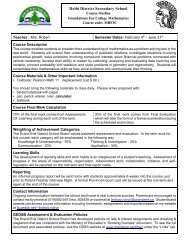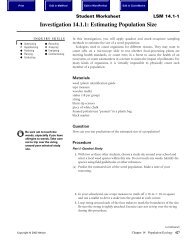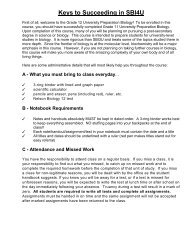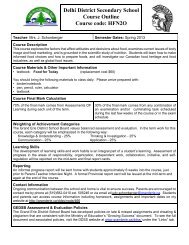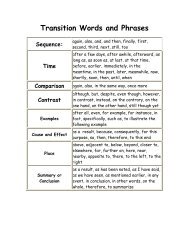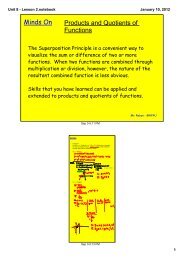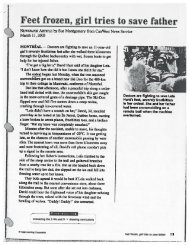Chapter 11.pdf
Chapter 11.pdf
Chapter 11.pdf
- No tags were found...
You also want an ePaper? Increase the reach of your titles
YUMPU automatically turns print PDFs into web optimized ePapers that Google loves.
D24 Quick LabFocal LengthPurposeTo find a good approximation of the focal length of anyconvex lens and see the relationship between thecurvature of the lens and the focal lengthMaterials & Equipment• ruler• 279 432 mm blankpaper• several flat convexlenses of different focallengthsCAUTION: Do not shine bright light into anyone’s eyes.Incandescent light sources can become very hot. Do nottouch the bulbs or block air flow around the light bulbs.Procedure1. Copy the data table below into your notes. Giveyour table a title.Lens1.2.3.4.Focal Length(cm)• ray box with severalparallel rays of light• 216 279 mm blankpaperRadius (cm)2. Use your ruler to draw a straight line lengthwiseacross the middle of the 279 432 mm paper.This line will act as the principal axis for eachlens.3. Near one end of the paper, draw a vertical linethat intersects the first line at 90°. This line will actas the axis of symmetry for each lens.4. Place the first convex lens on the principal axisaligned with the axis of symmetry as shown inFigure 11.60.Figure 11.60 Step 45. Place the ray box off the paper so that the rays willshine parallel to the principal axis through thelens. An equal number of rays should be aboveand below the principal axis.6. Look to see where the rays converge on theprincipal axis. If they converge above or below theaxis, adjust the ray box a little to make themconverge on the principal axis.7. Place a dot at the location where the raysconverge. This is the focus. Remove the lens,then measure the distance from the vertex, whichis the intersection of the principal axis and theaxis of symmetry, to the dot. Record this as thefocal length.8. Determine the radius of the lens by placing thelens on a sheet of 216 279 mm paper andtracing one side of the lens to create an arc.Reposition the lens so that the arc is extendeduntil you have traced a full circle. Measure theradius of this circle, and record it in your table.9. Repeat steps 4 to 8 for the remaining lenses.Questions10. Explain how you determined the radius of the lensonce you drew the circle.11. What is the relationship between curvature(radius) of the lens and focal length of the lens?12. Explain how you would modify this lab to make itwork for:(a) concave lenses(b) concave mirrorsRay diagrams model the behaviour of light in mirrors and lenses.459



